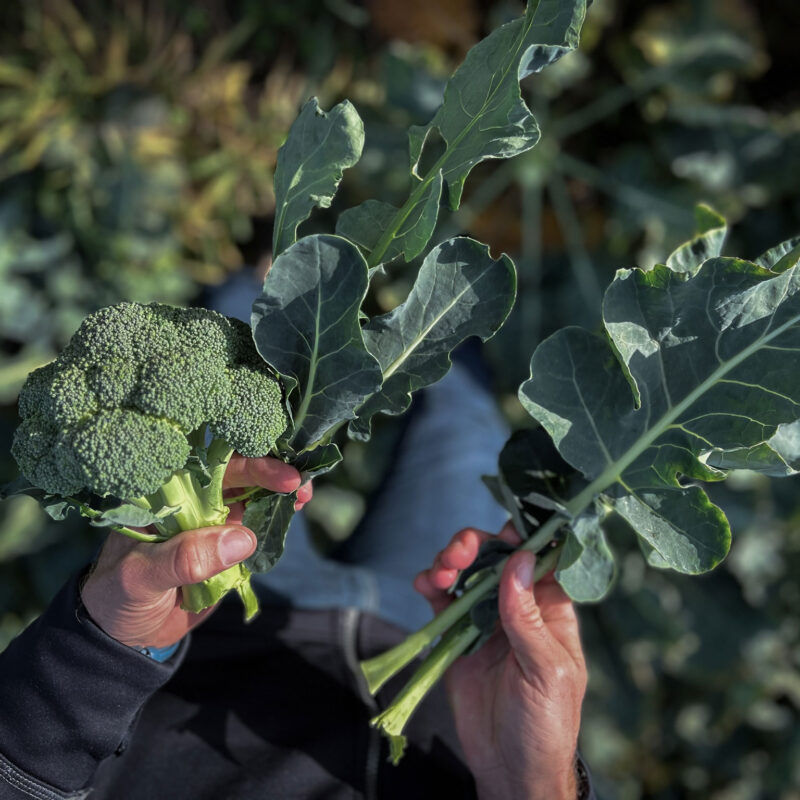Can PFAS Save the Baltic Sea?
2025.04.22

Christian Sjöland has a background in business, holding a MSc in Business Administation specializing in business development and internationalization. He is also a project manager in the program area Future Food at Axfoundation.
Insights from Christian Sjöland: Did you eat eggs this Easter? Did you choose organic or conventional eggs? Either way, unfortunately, you’ve likely either consumed PFAS or contributed to PFAS pollution. But the good news is that there will soon be animal feed – and therefore eggs – that are better for the environment, health, and the economy than both conventional and organic eggs.
Why is our food eating our food?
When the consumer magazine Råd & Rön revealed high levels of PFAS in organic eggs last year, the reaction was swift: sales dropped from 16% to 11.5%. But in the midst of this tough situation for producers, a door may open to something better: a chance to protect the Baltic Sea’s heavily pressured fish stocks and take the next step toward sustainable animal production.
Fishing pressure, along with pollution, are the biggest environmental challenges facing the Baltic Sea. But it’s not our consumption of Baltic fish that’s the problem – it’s that our food is eating our food. A staggering 77% of the Swedish commercial fishing catch goes directly to animal feed instead of human food. It’s not just about organic hens – even conventional chickens, fish, and pigs can be fed feed that contains fishmeal.
Does hope lie in reduced demand?
Fishmeal has long been a key ingredient in organic layer hen feed, as the EU bans synthetic amino acids in organic production. However, due to past concerns about dioxins in organic eggs Svensk Fågel and Svenska Ägg banned the use of Baltic fishmeal in their feed. The final blow was the high PFAS levels.
Reduced demand for fishmeal could mean a decrease in large-scale commercial fishing in the Baltic Sea, giving fish stocks a chance to recover. In the best-case scenario, surströmming (fermented herring) – currently on the red list – might one day be green-listed again.

The PFAS challenge is complex. If you eat organic eggs, you ingest PFAS (due to the fishmeal). If you eat conventional eggs, you contribute to PFAS pollution.
Precision fermentation
Synthetic (also known as pure) amino acids are nutrients that animals need to grow and stay healthy. Most are produced – or can be produced – through precision fermentation. Precision fermentation involves programming microorganisms (such as yeast or bacteria) to produce a specific amino acid, like methionine.
Methionine is an essential amino acid for healthy growth in many animals and is found in high levels in fishmeal. In precision fermentation, the microorganism is fed sugar and functions like a biological factory to produce methionine. In this way, it’s possible to create precisely the right nutrients for animal feed – without relying on fishmeal or other environmentally harmful raw materials.
What could the solution look like?
The PFAS challenge is complex. If you eat organic eggs, you ingest PFAS (due to the fishmeal). If you eat conventional eggs, you’re not consuming a relevant amount of PFAS – but you are contributing to PFAS pollution. That’s because PFAS are found in pesticides used in growing ingredients like soy and grains for conventional laying hen feed.
A more sustainable solution may lie in a golden middle ground: sustainably grown grains, synthetic amino acids, and regenerative protein sources. These could include mussel meal, insect meal, and mycoprotein – all of which contain low levels of PFAS.
To help develop such a solution, Axfoundation is running the project “Future Feed for Poultry, Fish, and Pork” (5F) which includes partners such as Stjärnägg, Lantmännen, and Svenska Foder.
Together, we are creating circular, resource-efficient feed ingredients with low environmental and climate impact. By using alternative protein sources like insect meal, mussel meal, and mycoprotein, the project aims to replace unsustainable ingredients such as fishmeal and imported soy in animal feed. To succeed, continued commitment is needed from all parts of the value chain.
PFAS in Organic Eggs – How Dangerous Is It?
PFAS are industrial chemicals that have been used in textiles, packaging, and firefighting foam, among other things. They do not break down in nature and can end up in drinking water, fish, and other foods – not just eggs. PFAS naturally occur in more foods than just eggs, and it’s the total amount you consume that determines the risk.
According to tests by Råd & Rön, a child can reach the tolerable weekly intake (TWI) with just three organic eggs per week – if they come from the most PFAS-contaminated batches. For adults, that corresponds to 21 eggs. For the least contaminated eggs, it would take 11 eggs for children and 78 for adults.
A single egg isn’t dangerous in itself, but PFAS accumulate in the body and can, over time, affect the immune system, fertility, and hormonal balance. That’s why caution is recommended with regular consumption – especially for children.
A win for the Baltic Sea, public health, and society
Beyond environmental benefits, 5F feed offers significant economic advantages for society. Today, tax revenues from large-scale commercial fishing in the Baltic Sea cover only about one-sixth of its actual costs, creating a heavy burden. According to the BalticWaters Foundation, stricter limits –or even a full stop to large-scale fishing – could result in an annual economic benefit of approximately 240–260 million SEK. By replacing fishmeal with sustainable proteins, we can both restore the Baltic Sea’s ecosystem and achieve major societal cost savings.

The high PFAS levels have been a wake-up call. But today’s crisis is tomorrow’s opportunity to shift toward better alternatives.
Through collaboration, innovation, and courage, what has been the worst crisis for organic egg producers could turn out to be the best thing that’s happened to the Baltic Sea – and to the eggs of the future.
/Christian Sjöland, Project Manager Future Food, Axfoundation

























































